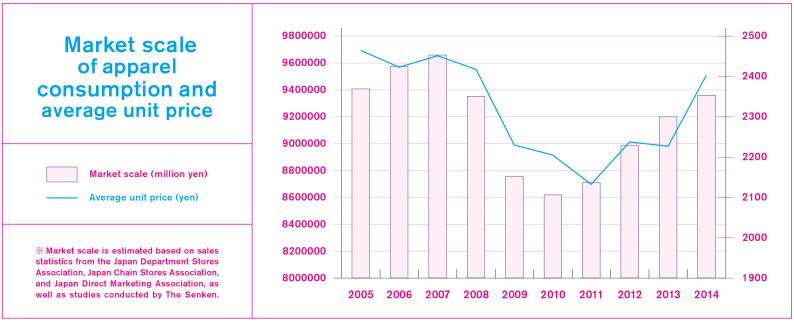The unit price of apparel is on the rise. As a result, market expansion (on a sales basis) has continued over the years, even in 2014.
The rise in unit price is thought to have begun in 2011, corresponding with the period in which increases in costs in the apparel manufacturing countries became evident. This resulted in a situation where manufacturers had no choice but to transfer rising costs on to the retail prices. At the same time, as disposable income growth remained sluggish, it also became obvious the promotion of a ‘value over price’ strategy best matched the needs of consumers.
On a quantity basis, the market shrank by 5.8% in 2014. The upward trend in prices, which was not limited to apparel, has since been countered in terms of consumption as a result of the drop in energy prices, including petrol.
Shifts in the yen exchange rate also have a significant impact on apparel imports. It is inevitable that both apparel prices and market scale will be manipulated by external factors such as overseas production costs, exchange rates, and crude oil prices.
In the current situation, the most effective approach for producers and retailers is to capture consumers through strategies such as value over price, requiring a high degree of precision.

